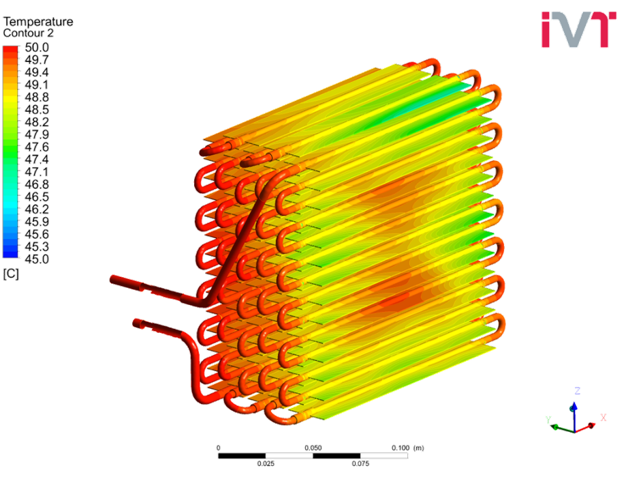HexTraSim
Optimal Modeling of Heat exchangers for transient simulations
Due to the enormous number of refrigerators worldwide and the associated high total energy demand of the refrigeration sector as well as the resulting emissions, manufacturers of refrigerators are challenged to develop even more efficient appliances which should guarantee an optimal use of energy.
According to the current state of knowledge at the Institute of Internal Combustion Engines and Thermodynamics about the refrigeration process and especially about its modelling, heat exchangers are the components that still hold the greatest uncertainty and thus the greatest potential in terms of efficiency. The planned research project therefore focuses on deepening the basic knowledge of the heat exchangers used in household refrigeration appliances in order to subsequently optimize their energy utilization and thus the entire refrigeration cycle. This will result in an increase in efficiency and, due to the high number of refrigerators worldwide, in a significant reduction in electricity consumption and of the associated emissions.
This basic research on heat exchangers is carried out by means of experimental investigation on a calorimeter test bench and by means of simulated analysis (CFD). In order to be able to model the heat exchangers with high accuracy and thus use them in a 1D refrigeration cycle simulation, the so-called method of influence factors is applied. The influencing factors are to be determined experimentally as well as simulation-based and both methods are to be compared regarding their suitability for application in a development process. The experimental measurement of transient operating conditions of the entire unit will validate the 1D overall simulation model including the heat exchangers. By means of this 1D refrigeration cycle model, it is possible to predict the energy efficiency of household refrigeration appliances, e.g., when using different heat exchanger variants. Furthermore, meaningful insights into the refrigerant charge, its distribution and displacement under transient operating conditions can be gained.
The research project is funded by the Austrian Research Promotion Agency FFG (funding program: "Bridge 1 – 32nd call"). It started in January 2021 and will last 2 years. The research project is carried out in cooperation with Liebherr-Hausgeräte Lienz GmbH.

Figure: Surface temperature distribution of a condenser.